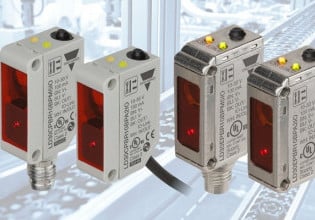SCHUNK Automates Deburring Machines to Relieve Employee Fatigue in Machine Tending
SCHUNK has developed an automatic deburring machine for cleaning up cast, cut and milled parts.
What is Deburring?
Deburring removes burrs, flash, sharp edges, and other small imperfections in machined parts, and deburring operations often require grinding and scraping parts manually. SCHUNK offers over 11,000 standard parts and serves many manufacturing industries. Their clamps and grippers are found in a wide variety of manufacturing facilities.
Grinding operations can cause several types of repetitive motion injuries. Gripping small parts can create strain on hands and fingers, causing carpal tunnel and similar injuries. Grinding can also cause a “vibration white finger” (VWF), also called a “hand-arm vibration system” (HAVS). VWF occurs when a worker holds a vibrating tool for long periods of time. Repeated, high-frequency vibrations act as forced motions on the worker’s hand.
To combat these injuries, grinding operations are prevented through administrative controls, such as limiting the amount of time an employee can grind. Overall, these options are expensive and unpleasant for all involved.
SHUNK’s Latest Automated Deburring Solution
SCHUNK created is a way to deburr materials without the manual labor and risk of repetitive motion injuries. There are three new deburring tools from SCHUNK, the CRT, RCV, and CDB. The CRT is a pneumatically driven file that can get into narrow crevices and tight spaces.
Suppose that a certain fixture requires one piece of stainless steel to slide into a slot cut into another.

SCHUNK’s CDB deburring tool in action. Image used courtesy of SCHUNK
A small burr can make this task difficult, or even impossible, as it will prevent one part from sliding into the other. It also can interfere with its placement or removal. This is where the CRT may be useful, as it can reach into tight spaces and remove these burrs, decreasing part-to-part variability.
The RCV is another pneumatically-driven deburring tool specially designed for rotary tools. This is especially useful in milling operations, where a simple (often automatic) tool change can cut a piece, then deburr it before moving it to the next station.
The RCV uses a vane motor, giving it high torque and a short stopping time. Due to the short stopping time, this tool can be installed, started up, used, stopped, and removed quickly, improving throughput.

The CDB deburring tool. Image used courtesy of SCHUNK
The CDB deburring tool may be useful for smaller manufacturing firms producing smaller numbers of parts or are beginning to automate their deburring process. The CDB uses hand deburring tools so existing file inventory can be implemented more easily. It can also work in both the axial and radial directions, meaning it can scrape the inside of a hollow cylinder or linearly along a keyway.
Reducing Injury
All three deburring tools are gimballed, meaning they can rotate around an axis, firmly applying pressure to the sides for deburring as they rotate. Technicians and engineers can set up the milling and deburring operations by adjusting the pneumatic pressure, easing the programming load.
These three deburring tools aim to reduce fatigue and repetitive motion injuries among machinists in the production line. The speed at which the automated deburring can occur will also reduce rejected parts, tool change downtime, and increase the consistency of part-to-part repeatability.






